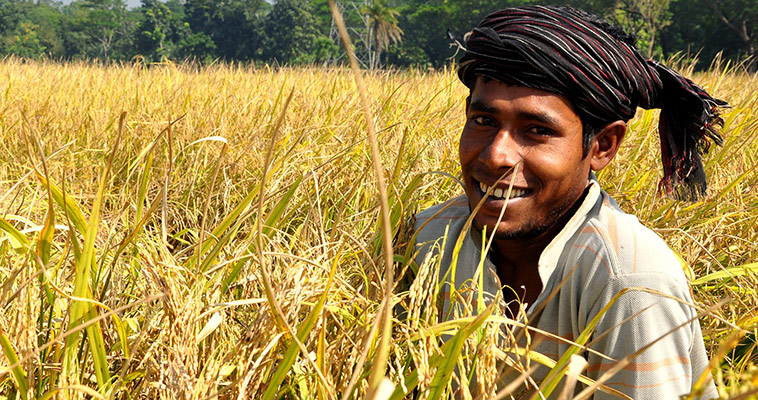- What We Do
- Agriculture and Food Security
- Democracy, Human Rights and Governance
- Economic Growth and Trade
- Education
- Environment and Global Climate Change
- Gender Equality and Women's Empowerment
- Global Health
- Humanitarian Assistance
- Transformation at USAID
- Water and Sanitation
- Working in Crises and Conflict
- U.S. Global Development Lab
Speeches Shim

-
Bangladesh

-
Population
162.9 Million
-
Pop. Under 5
15.2 Million
-
% Stunting
36% Of Children Under 5
-
% Underweight
33% Of Children Under 5
Photo credit: Wasif Hasan/USAID
Malnutrition in childhood and pregnancy has many adverse consequences for child survival and long-term well-being. It also has far-reaching consequences for human capital, economic productivity, and national development overall. The consequences of malnutrition should be a significant concern for policy makers in Bangladesh, since about 5.5 million children under 5 years (36 percent) are suffering from chronic malnutrition (stunting or low height-for-age) and 14 percent are acutely malnourished (wasting or low weight-for-height).
USAID Programs: Accelerating Progress in Nutrition
As of January 2018, the following USAID programs with a focus on nutrition were active in Bangladesh. The U.S. Government selected Bangladesh as one of 12 Feed the Future target countries for focused investment under the new U.S. Government Global Food Security Strategy. Feed the Future, the U.S. government’s global hunger and food security initiative, has a multi-year strategy with several key areas of nutrition intervention. The main objective is to intensify staple production while simultaneously diversifying agriculture into high-value, nutrient-dense products to increase the availability, accessibility, and utilization of nutritious food. The strategy seeks to strengthen the business-enabling environment to promote linkages to the private sector and market access for farmers and small enterprises, and to strengthen capacities in government agencies and local institutions, including farmers’ and women’s groups. Feed the Future is carrying out nutrition education and behavior change communication interventions in regions where Title II and Global Health Initiative projects are also operating. Target beneficiaries include rice farmers, the landless poor who are net purchasers of rice, small- and medium-size farmers who can diversify production, agricultural-based enterprises, and people employed in the fishing and aquaculture sectors.
- Strengthening Multisectoral Nutrition Programming through Implementation Science Activity
- Feed the Future Livestock Production for Improved Nutrition (LPIN)
- Food for Peace Strengthening Household Ability to Respond to Development Opportunities (SHOUHARDO) III
- Food for Peace Nobo Jatra
- Improving Nutrition through Community Based Approaches (INCA)
- Feed the Future Nutrition Innovation Lab
- The Agriculture, Nutrition, and Gender Linkages (ANGeL) Project
- Food for Peace

Comment
Make a general inquiry or suggest an improvement.